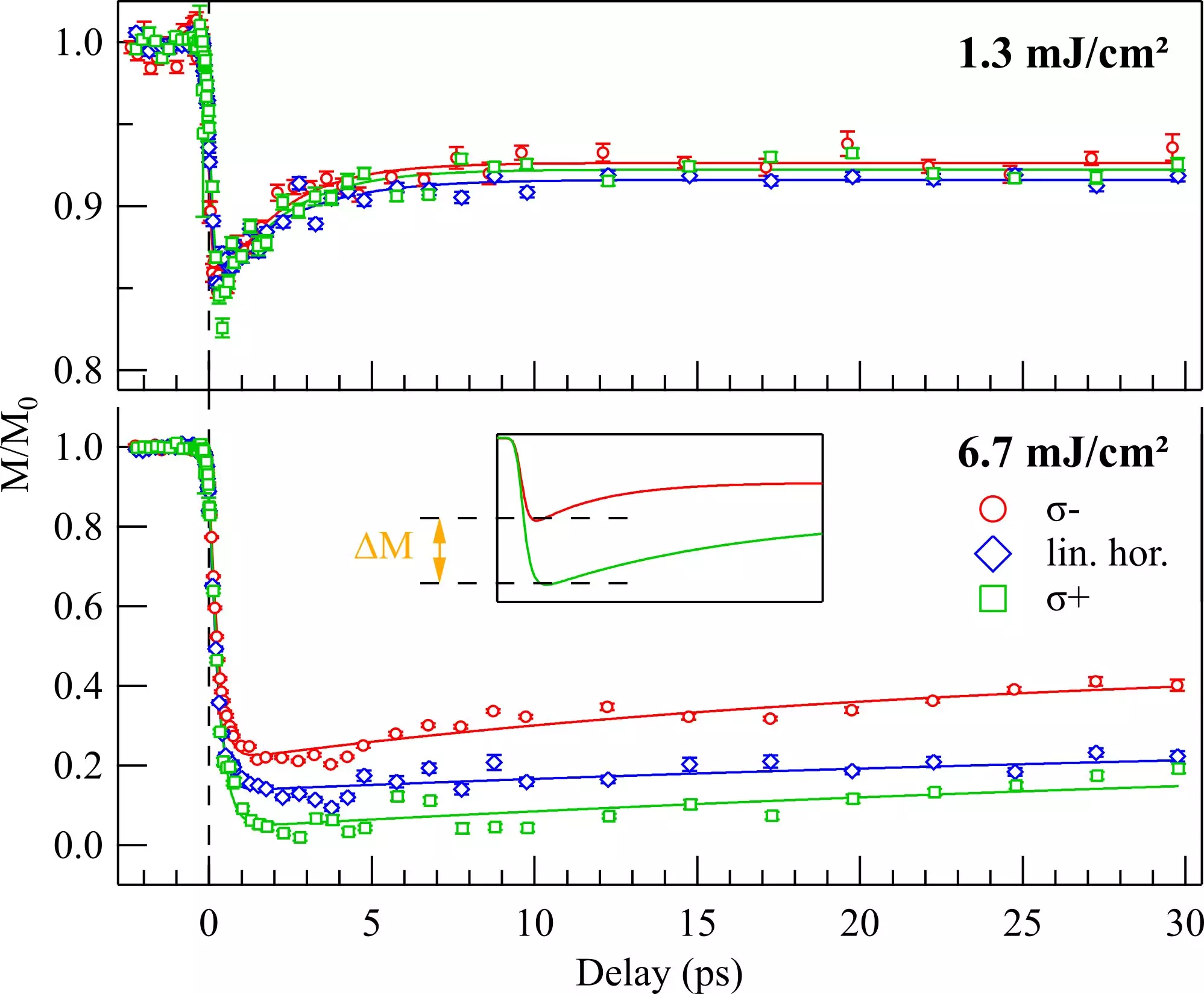In a groundbreaking study conducted by scientists from the Max Born Institute (MBI) and an international team of researchers, a new approach to manipulating magnetization without the use of thermal effects has been unveiled. The traditional method of using intense laser pulses to induce magnetization changes in materials is often limited by the heat load generated in the process. However, by exposing a ferrimagnetic iron-gadolinium alloy to circularly polarized extreme ultraviolet (XUV) radiation, a significant non-thermal magnetization response was observed, dependent on the handedness of the incoming XUV light burst.
The key mechanism behind this novel approach is the inverse Faraday effect (IFE), which allows for the generation of magnetic moments in a material through an efficient interaction between the polarization of the light and the electronic spins. Unlike traditional methods that rely on electronic heating induced by light absorption, the IFE approach offers a more direct and coherent pathway to manipulating magnetization without the need for significant heat input.
Experimental Demonstration and Findings
The researchers utilized circularly polarized femtosecond pulses of XUV radiation, generated at the free-electron laser FERMI, to demonstrate the non-thermal generation of magnetization in a metallic iron-gadolinium alloy. The high photon energy of the XUV radiation allowed for resonant excitation of core-level electrons, leading to a substantial opto-magnetic response. The results showed that the IFE-induced magnetization could reach up to 20-30% of the ground-state magnetization of the alloy, highlighting the effectiveness of this non-thermal approach.
The implications of these findings extend beyond the realm of fundamental research, with potential applications in ultrafast magnetism, spintronics, and coherent magnetization control. By providing an efficient method for generating large magnetization changes on ultrafast time scales, the non-thermal manipulation of magnetism by light opens up new possibilities for technological advancements in data storage and other fields where rapid magnetization control is essential.
The study conducted by the team of researchers from MBI sheds light on a new frontier in the manipulation of magnetism using light. By moving away from traditional thermal-based approaches and harnessing the power of the inverse Faraday effect, the researchers have demonstrated the potential for achieving significant magnetization changes on ultrafast time scales. The implications of this work are far-reaching and pave the way for innovative applications in magnetism research and beyond.


Leave a Reply